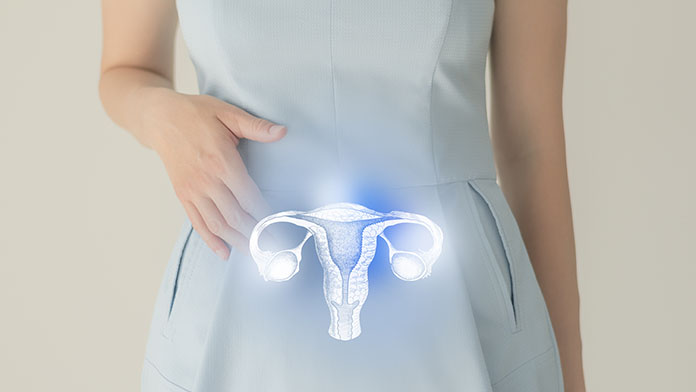Over the last few months we have heard a lot about salpingectomia, a surgical operation involving the removal of the fallopian tubes. The reason? The statements of the influencer Francesca Guacci, who in an interview with the newspaper Il Gazzettino defended her choice to undergo a bilateral salpingectomy, at the age of 22, to avoid a natural pregnancy. For her, she said, contraceptives weren’t enough and she lived every relationship with the fear of getting pregnant with her.
The operation is simple, it is performed under general anesthesia and laparoscopically, thus making a few small holes in the abdomen. It does not involve any hormonal changes and does not affect the woman’s later life. However, although it is a low-risk operation, salpingectomy is completely irreversible and is generally not performed in young women for contraceptive purposes. So much so that before being able to carry out the operation, Francesca Guacci received many refusals.
Antonio Lanzone, professor of gynecology and obstetrics and director of the complex operating unit of obstetrics and obstetric pathology at the Agostino Gemelli University Hospital Foundation in Rome, expresses some perplexity with respect to the choice of the young influencer (who is now 28 years old). «The case should be analyzed in detail, it seems strange to me that in the absence of risk factors, the choice was that of an operation of this kind, which certainly it is not the practice for women who do not want to conceive».
Salpingectomy: in which cases is it done?
In case of ectopic pregnancy
Salpingectomy is a curative or prophylactic intervention that is necessary, for example, in the case of ectopic pregnancy oh you severe tubal infection. “Usually this operation is carried out urgently in women who have an ectopic pregnancy, that is, in cases in which the embryo, instead of having nested in the uterus, has remained in the tubes”, explains the gynecologist. “Generally, around the sixth or seventh week of pregnancy, the patient has pain, bleeding and is at risk of rupture of the tubes, so she resorts to exporting the tube in which the embryo is present”.
If you have a severe tubal infection
Another relatively common circumstance that requires a procedure of this type is the presence of inflammatory problems. “In the event of inflammation of the tube, antibiotics are administered but if, despite drug treatment, the inflammation does not regress and expands (with the risk of involving other nearby organs), an operation must be performed to remove the nucleus infected. Sometimes inflammations of this type develop following aappendicitiswhich involves the tube adjacent to the intestine”.
To prevent cancer
In other cases, salpingectomy is performed as preventive strategy to avoid the development of a tumor of the reproductive organs in women with particular risk factors. In recent decades, researchers have identified genetic mutations that predispose to cancers such as breast and ovarian cancer. Examples of this are variations in the BRCA1 and BRCA2 genes. Actress Angelina Jolie, for example, carries one of these mutations and has chosen to have both her breasts and ovaries removed.
“We know that women with breast cancer and who have certain genetic mutations have a high risk of later developing ovarian cancer,” continues Lanzone. «Until a few years ago, prophylactic excision in premenopausal women without risk factors who underwent uterine surgery was questionable, but in recent years we have discovered that a substantial proportion of ovarian tumors start from the fallopian tubes. . Therefore today we also remove the tubes and leave the ovary as much as possible, which is essential not only for reproduction, but also for the production of hormones”.
However, tubal ligation is not completely irreversible
Returning to the case of the influencer, the Gemelli specialist specifies that there is actually a request, albeit still numerically insignificant, for salpingectomy by women after various pregnancies by cesarean section, and for whom a further pregnancy may represent a risk, or purposes of a contraceptive choice.
In these cases, however, in addition to the salpingectomy, the tubal ligation, an operation that is not entirely irreversible with respect to the reproductive desire: it is basically a question of hindering the journey of the sperm towards the ovary with various methods (the tubes can be incised and removed, or a substance that creates a sort of barrier can be inserted) . It is clear, concludes Lanzone, “that in a choice of this type, in addition to the well-considered consent of the patient with a further period of reflection, one must consider the possibility that the doctor may refuse to carry out the operation for contraceptive purposes”.
The male equivalent is vasectomy (which, however, is reversible)
The male equivalent of salpingectomy could be the vasectomyalthough there are many differences between the two procedures. “With a vasectomy, the surgeon interrupts the way that carries the sperm from the testicles to the outside,” he explains. Luca Boeri, urologist and andrologist at the Ospedale Maggiore Policlinico Milano. Sperm are formed in the testicles, are then collected in the epididymis, a small duct, and remain there until ejaculation. At the time of ejaculation, they pass through the vas deferens and are released from the penis.
“Vasectomy is a minimally invasive procedure, it is performed on an outpatient basis and consists of cutting the vas deferens and removing the two ends of the duct in order to block the passage and exit of the sperm”, continues the specialist. It is a reversible and microsurgical procedure: it takes 10-15 minutes and without general anesthesia. The procedure is not risky, although, like all operations, it can present complications. “Local infections, bleeding may occur or, after surgery, chronic testicular pain may arise at the point where the duct was interrupted,” explains Boeri.
«However, these are very rare risks and complications: vasectomy is generally well tolerated. This procedure is widespread throughout the world, but much less in Italy, even if there are no legislative impediments to its use”. And he adds: «Vasectomy is an excellent contraceptive method often requested by couples in which the woman cannot take hormonal contraceptives, by couples who do not like to use the classic “barrier” methods and by those parents who do not wish to have more children and choose a more spontaneous married life.

